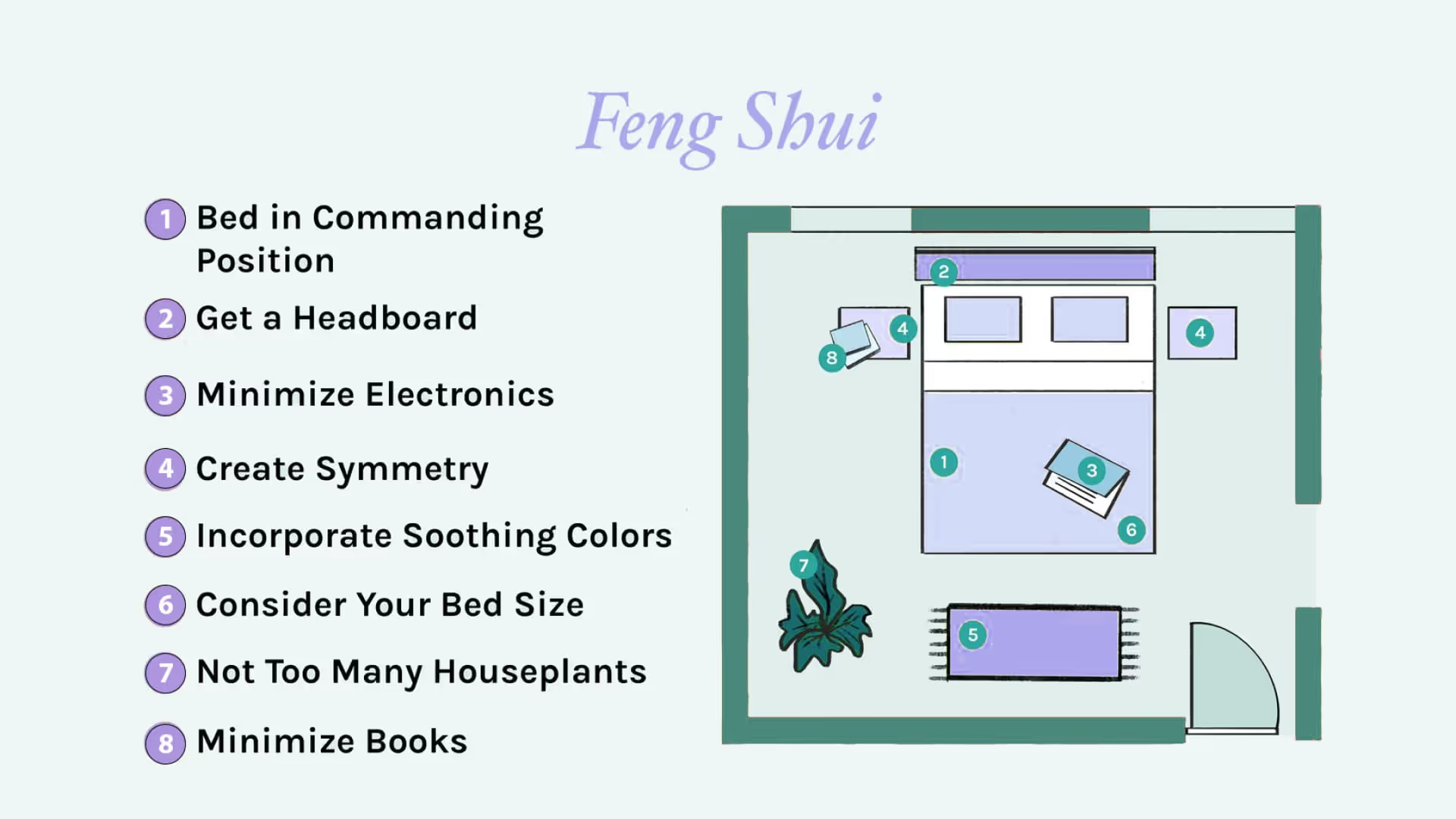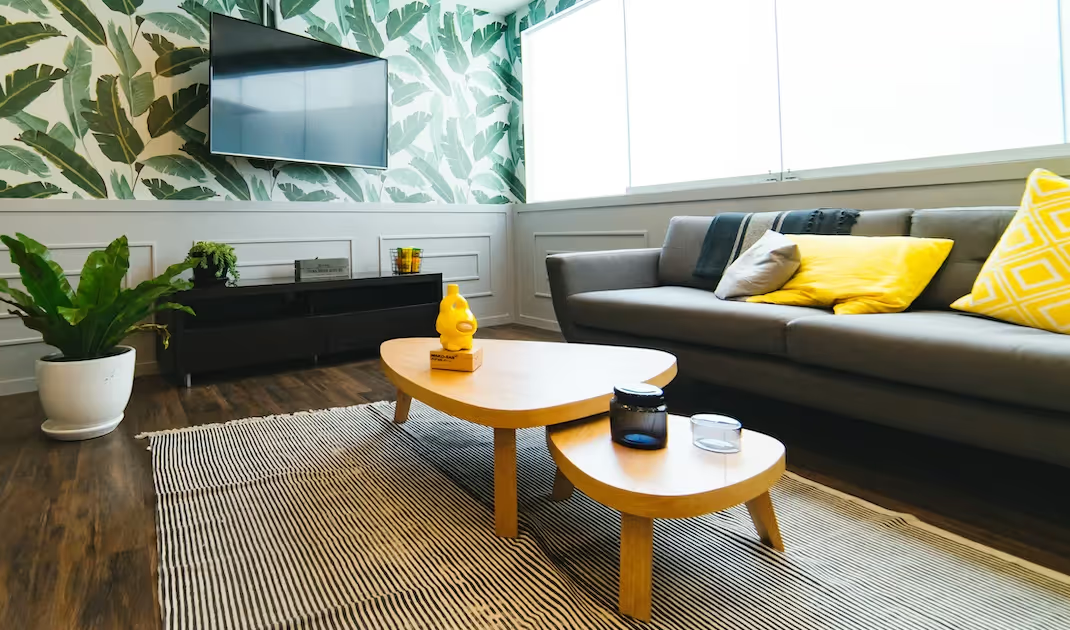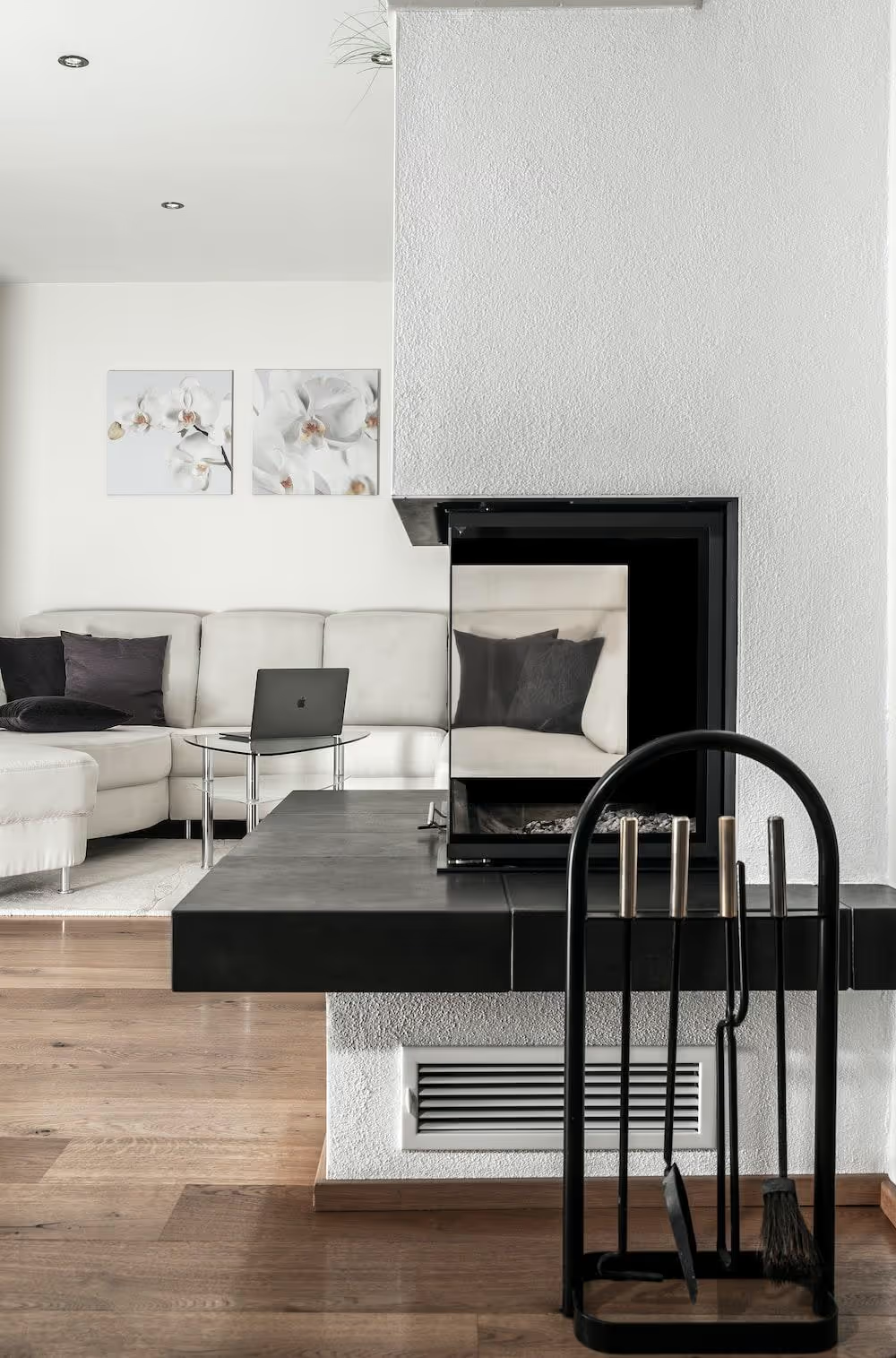
The Art of Feng Shui: Creating Harmonious Interiors in Your Home
Feng shui is an old Chinese concept that focuses on creating a harmonious environment in your home.
The central theme of the concept is chi, or the life force that flows through everything in the universe.
By applying the interior concept, you can enhance the appeal of your home.
Let's introduce you to the concept of feng shui, such as how to use the bagua map, the five elements, the yin and yang, and the feng shui colors, to create harmonious interiors in your home.

The Essence of Feng Shui: Crafting Harmony Inside Your Home
At the center of Feng Shui is the Bagua map, a fundamental tool used to analyze and enhance the energy flow within space.
The Bagua is an octagonal map with nine sections that signifies different areas of life, such as wealth, health, and relationships.
Each section is associated with a specific color, element, and aspect of life.
To apply the Bagua to your home, align it with the entrance, placing the career section at the front door.
This alignment serves as a foundation for determining the optimal placement of key elements and ensuring the balanced distribution of energy throughout your living space.
The Bagua map acts as a guide for home interior design in alignment with the energy flow you seek to cultivate.
For instance, if you want to enhance your career prospects, focus on the career section by incorporating water elements, dark colors, and symbols of your profession.
By integrating the Bagua map into your home design, you tap into the ancient wisdom of Feng Shui to promote positive energy.
The Five Elements: Balancing Energies in Harmony
Central to Feng Shui philosophy are the five elements – Wood, Fire, Water, Metal, and Earth.
These elements represent distinct energies that interact with one another. Balancing these elements in your home is crucial for maintaining harmony and well-being.
Wood is a symbol of energy and vitality; Fire signifies passion and transformation; Earth embodies stability and nourishment; Metal signifies precision and clarity; Water represents fluidity and abundance.
To achieve balance, incorporate these elements strategically based on their cyclical relationship: Wood fuels Fire, Fire creates Earth (ashes), Earth produces Metal, Metal holds Water, and Water nourishes Wood.
Incorporating the five elements involves a thoughtful selection of colors, materials, and shapes within your living space.
For example, to enhance the Wood component, introduce green colors and wooden furniture. A fireplace or candles can represent the Fire component, while earthy tones and ceramics contribute to the Earth component.

Metal can be represented through metallic finishes or white colors, and water features, mirrors, or the color black embody the Water element.
By maintaining a balance of these elements, you create a space that promotes a sense of equilibrium and vitality.
This holistic approach, deeply rooted in ancient philosophies such as Feng Shui, extends beyond mere physical arrangements and taps into the interconnectedness of energy and well-being.
In such environments, individuals often experience an increased sense of clarity and focus.
The integration of natural elements like plants or water features further amplifies the positive energy, creating a symbiotic relationship between the surroundings and the individuals inhabiting the space.
This approach to design and living is not merely about aesthetics but also about cultivating a mindful and intentional connection with the energies that surround us.
Embracing Yin and Yang: The Dance of Dualities
In the philosophy of Feng Shui, the concept of Yin and Yang represents the dual forces that are in constant flux and balance.
Yin is associated with receptivity, tranquility, and darkness, while Yang embodies activity, brightness, and energy. Balancing these opposing forces is essential for creating a harmonious living space.
To apply the concept into your home, consider the qualities of each space and adjust accordingly. For example, bedrooms, meditation areas, or quiet corners can be enhanced with Yin qualities, featuring soft textures, subdued lighting, and calming colors.
Active and vibrant spaces, such as the living room or kitchen, benefit from Yang elements, including bright lighting, bold colors, and energetic decor.
Applying the Yin and Yang philosophy extends beyond individual spaces to the arrangement of furniture and decorations. A harmonious blend of curved and straight lines, soft and hard surfaces, and light and dark colors contributes to a balanced energy flow.
Achieving equilibrium in your home involves mindful consideration of the Yin and Yang qualities present in each area and intentionally adjusting the elements to create a cohesive and energetically balanced living environment.
Feng Shui Colors: Vibrational Harmony in Hues
Colors play a pivotal role in Feng Shui, influencing the energy and mood of a space. Each area of the Bagua map corresponds to specific colors that resonate with the associated life aspect. For instance, the wealth area is associated with purple or gold, the love and relationships area with pink or red, and the health area with green or blue.
To harness the vibrational harmony of colors, incorporate them strategically in your decor, choosing hues that align with the energy you wish to enhance in each particular space.
Consider the psychological and emotional impact of colors when designing your home.
Warm colors like reds and oranges evoke energy and passion, making them suitable for lively spaces like the living room.
Cool colors promote relaxation and calm, making them ideal for bedrooms or meditation areas.
Achieving a harmonious color palette involves a thoughtful selection of hues that resonate with your intentions and complement the overall energy flow of your space.
By incorporating Feng Shui colors, you infuse your home with a spectrum of energies that align with the principles of balance and vitality.
Creating a Harmonious Haven: Integrating Feng Shui Wisdom
Incorporating the Feng Shui concept into your home is a journey of intentional design and mindful living.
By understanding the Bagua map, balancing the five elements, embracing the dance of Yin and Yang, and harnessing the vibrational harmony of Feng Shui colors, you create a living space that resonates with positive energy and holistic well-being.
The ancient philosophy offers a roadmap for crafting a harmonious haven where the energies of your home align with your aspirations and contribute to a balanced and vibrant life.
As you embark on this transformative design journey, remember that it's a holistic approach to living that fosters harmony, balance, and positive energy in every corner of your home.
Understanding the Bagua Map: Blueprint for Energy Flow
As we have read, feng shui can help you create a home that is not only beautiful, but also beneficial for your well-being.
You can apply the art of feng shui by following some simple steps, such as using the bagua map to identify the different areas of your home, using the five elements to balance and enhance the energy in each area.
With the ancient interior design concept, you can create a harmonious contrast and complementarity, and use feng shui colors to create a mood and atmosphere that suits your needs and preferences.
InDesign Interiors stands as a premium interior design boutique in the UAE. With our commitment to innovation and expertise in design, consultation, and construction, we excel in residential, hospitality, and commercial projects in the UAE.
Take the first step towards a harmonious interior design by scheduling an interior design consultation with us.
Schedule an appointment today, and let us bring your vision to life.

